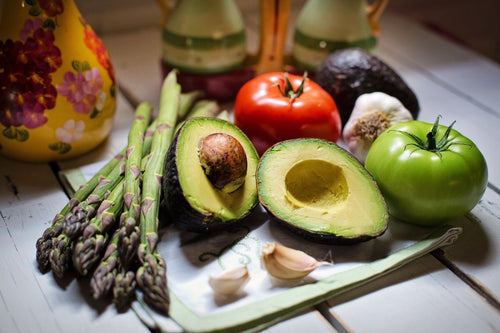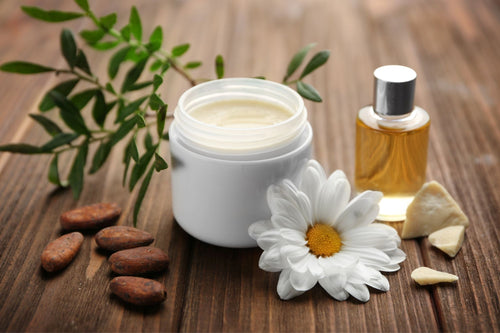OPCs, also known as oligomeric proanthocyanidins, offer numerous health benefits. In this article, you'll learn what OPCs are, where they are found, and how they can support your health.
The wonderful world of OPC - Natural health from nature
What are the main components of OPC?
OPCs, also known as oligomeric proanthocyanidins, are a group of natural compounds found in a wide variety of plants. They belong to the flavonoid family and are characterized by their potent antioxidant effects.
OPCs consist of catechin and epicatechin molecules that are linked together. Depending on their origin and composition, OPC extracts can have different chemical structures.
- OPCs are found, for example, in grape seeds, blueberries, cocoa and green tea.
- The concentration of OPCs varies greatly depending on the plant species and part. Grape seed extracts have the highest OPC content.
- In addition to OPC, many OPC-rich plants also contain other valuable ingredients such as vitamins, minerals and other antioxidants.
- Chemically speaking, OPCs are polyphenols that are characterized by a special molecular structure.
- This structure gives them high stability and resistance to oxidative damage.
- OPCs can therefore be described as “super power plants” among natural antioxidants.
OPCs are fascinating compounds that occur naturally and have enormous potential for human health due to their unique chemical properties.
What health benefits does OPC offer?
The health benefits of OPC are diverse and extend across a variety of areas. Numerous studies have demonstrated its positive effects on the human body.
OPCs are particularly notable for their powerful antioxidant properties. They can effectively neutralize free radicals and oxidative stress, thus protecting the body from harmful influences.
- OPCs help protect cells from aging and damage.
- They support a healthy cardiovascular system and can reduce the risk of cardiovascular disease.
- Studies have shown that OPC can also improve blood circulation and the elasticity of blood vessels.
- OPCs also have anti-inflammatory properties and can therefore be helpful in various inflammatory diseases.
- In addition, OPCs have positive effects on the immune system and can strengthen the body’s defenses.
- OPC can also be beneficial for the health of skin, hair and nails.
OPCs are truly multitalented, supporting the body in a variety of ways and protecting against numerous health risks. Their natural origin and unique effects make them a valuable component of a healthy lifestyle.
How is OPC metabolized in the body?
The body can absorb and utilize OPC very well. After absorption, the compounds undergo a complex metabolic process in which they are converted into various metabolites.
OPCs are absorbed in the intestine and then enter the bloodstream. There, they are further metabolized in the liver before they can exert their effects in the body.
- In the intestine, OPCs are partially broken down into smaller molecules before they are absorbed.
- In the liver, OPCs are then converted into even smaller metabolites, which then enter the body's circulation.
- These metabolites are responsible for many of the health effects of OPC.
- The body can utilize OPC very efficiently because they have high bioavailability.
- The concentration of OPC metabolites in the blood and tissue depends on various factors, such as the dosage and the individual metabolic situation.
- Regular intake of OPC-rich foods or supplements can lead to a sustained accumulation of metabolites in the body.
The complex metabolic process of OPC in the body demonstrates how valuable and effective these natural compounds can be used to support health in a variety of ways. OPC can be used to promote holistic well-being.
The influence of grape seed extracts on health
What are the main sources of OPC?
Grape seed extracts are one of the main sources of oligomeric procyanidin complexes (OPCs). OPCs are phytochemicals that exhibit a variety of health benefits. They occur naturally in various foods such as berries, nuts, seeds, and spices.
Grape seed extracts are particularly rich in OPC. They are extracted from the small seeds of the grape and contain up to 95% OPC. In addition to grape seeds, cocoa, green tea, and red wine yeast are also good sources of OPC.
- OPCs have a strong antioxidant effect and can effectively neutralize free radicals.
- They can improve the function of blood vessels and lower blood pressure.
- OPCs also have anti-inflammatory properties and can therefore alleviate diseases such as osteoarthritis.
- Grape seed extracts are not only an excellent source of OPC, but also contain other valuable nutrients such as vitamins, minerals and unsaturated fatty acids.
Grape seed extracts are therefore a true key to health. Their high OPC content and balanced nutrient profile make them a valuable component of a balanced diet.
How much grape seed extract do you need for a healthy diet?
The recommended daily dose of grape seed extract depends on various factors. Generally, 50–200 mg of OPC per day is recommended for a health-promoting effect.
However, this amount can vary depending on individual constitution, health status, and training level. People with increased antioxidant needs, such as competitive athletes or those with chronic illnesses, usually require a higher dose.
- With a balanced diet, the daily OPC requirement can usually be met by consuming 1-2 portions of OPC-rich foods such as grape seed extracts, berries or nuts.
- For targeted use in specific health problems, higher doses of 100-300 mg OPC per day may also be useful.
- It is important to discuss the intake of grape seed extracts with your doctor to find the optimal dosage.
- When taking grape seed extracts, you should pay attention to high-quality preparations with a standardized OPC content of at least 95% in order to achieve the desired effect.
A balanced diet rich in OPC-rich foods is key to good health. Grape seed extracts can provide targeted support for your supply of this important natural substance.
What factors determine the OPC content in food?
The OPC content in foods is influenced by various factors, including the variety, cultivation method, ripeness, and processing of the products.
In general, organic products that are processed carefully contain a higher OPC content than conventionally grown and industrially processed foods. Ripeness also influences the OPC content – ripe fruits and seeds generally contain more OPC.
- Grape seeds from red grape varieties such as Cabernet Sauvignon or Merlot have a significantly higher OPC content than green grape varieties.
- Cultivation methods such as organic farming, which avoid the use of pesticides, also promote the OPC content in plants.
- During processing, gentle methods such as cold pressing or freeze-drying lead to better preservation of the OPC in the final product.
- Overall, it can be said that foods with a high OPC content are naturally particularly beneficial to health. Through careful selection and processing, consumers can specifically increase the OPC content in their diet.
The OPC content in foods depends on many factors. Choosing high-quality, ripe, and gently processed products will ensure your body receives the optimal amount of these valuable antioxidants.
OPC - The health all-rounder
Which form of OPC is most effective?
OPCs, also known as oligomeric procyanidins, are natural antioxidants found in many plants and fruits. They are considered extremely effective in fighting free radicals and have numerous health benefits. However, there are different forms of OPC that differ in their composition and effectiveness.
Which form of OPC is the most effective?
- Grape seed extract: This extract contains the highest concentration of OPC and is therefore one of the most potent forms.
- Pine bark extract: Also very rich in OPC and extremely effective in combating oxidative stress.
- Cranberry extract: In addition to OPC, it also contains other important antioxidants such as vitamin C and anthocyanins.
- Cocoa extract: In addition to OPC, it also offers the benefit of the flavanol epicatechin.
Depending on individual needs and preferences, one or the other form of OPC may be most effective. However, grape seed extract is considered particularly recommended due to its high OPC concentration.
How much OPC can you safely consume daily?
The recommended daily dose of OPC is generally between 100-300 mg. However, the optimal amount may vary depending on age, health status, and other factors.
Guidelines for daily OPC intake:
-
Under 50 years: 100-200 mg
-
Over 50 years: 200-300 mg
-
In case of illness: Up to 500 mg, after consultation with the doctor
-
Pregnant/breastfeeding women: Maximum 200 mg
-
Doses higher than 500 mg per day should only be taken under medical supervision, as side effects may occur in rare cases.
-
It is advisable to slowly increase the OPC intake over a longer period of time to allow the body to get used to the increased intake.
-
In general, it is important to pay attention to individual tolerance and adjust the dose if necessary.
OPCs are a very valuable component of a healthy diet. By adhering to the recommended daily intake, their numerous benefits can be optimally utilized without taking any risks.
Are there any recipes that contain OPC?
OPCs can be taken not only in the form of dietary supplements but also through certain foods. Natural sources of OPCs can be found in fruits and vegetables, as well as in some beverages and spices.
Here are some delicious recipes that contain OPC:
- Grape Juice Smoothie: Grape juice is an excellent source of OPC. Blend it with bananas, yogurt, and a little honey for a vitamin-rich drink.
- Beetroot salad: Beets contain not only nitrates but also OPC. Combine them with walnuts, goat cheese, and a vinaigrette.
- Raspberry Chia Pudding: Raspberries are rich in OPC. Mix them with chia seeds, almond milk, and a little maple syrup for a healthy dessert.
- Dark chocolate: Cocoa powder and dark chocolate also contain significant amounts of OPC. Enjoy a small piece daily.
- Spices such as cinnamon, ginger or cumin: These spices are not only delicious, but also provide valuable OPC.
With these OPC-rich recipes, you can get your daily dose of valuable antioxidants in a completely natural and delicious way. Try these dishes and see for yourself their benefits!
Q&A
What are OPCs?
OPC, or oligomeric proanthocyanidins, are natural compounds with antioxidant properties that are found primarily in grape seeds, berries and other plants.
What health benefits do OPCs offer?
OPCs can neutralize free radicals, support the cardiovascular system, have anti-inflammatory effects and promote skin health.
How is OPC absorbed into the body?
OPCs are absorbed in the intestine, enter the bloodstream and are metabolized in the liver, where they exert their health-promoting effects.
How much OPC should you consume daily?
The recommended daily dose is between 100-300 mg, depending on age, health status and activity level.
Which foods are rich in OPC?
Grape seed extracts, berries, cocoa, green tea and red grapes are excellent natural sources of OPC.
OPC from grape seed extracts are true health miracles with a multitude of benefits. Incorporate them into your diet to reap their positive effects and enhance your well-being.









